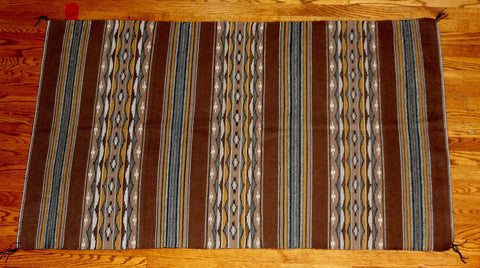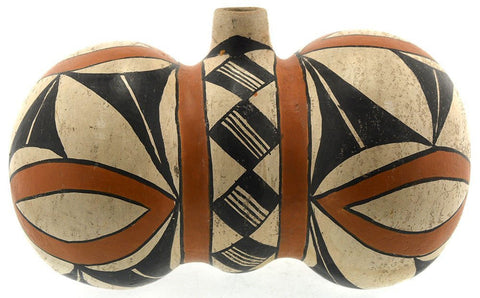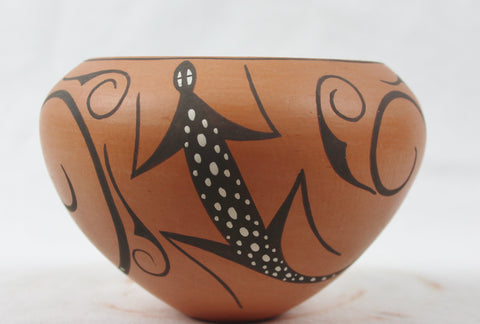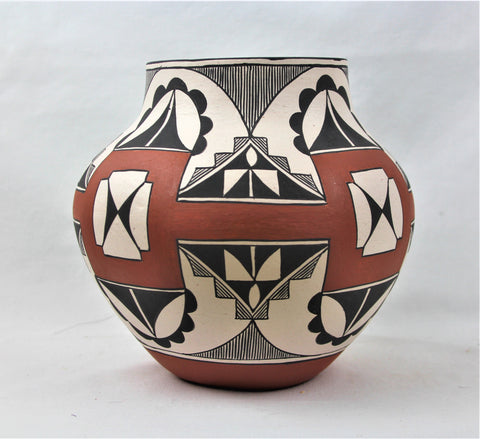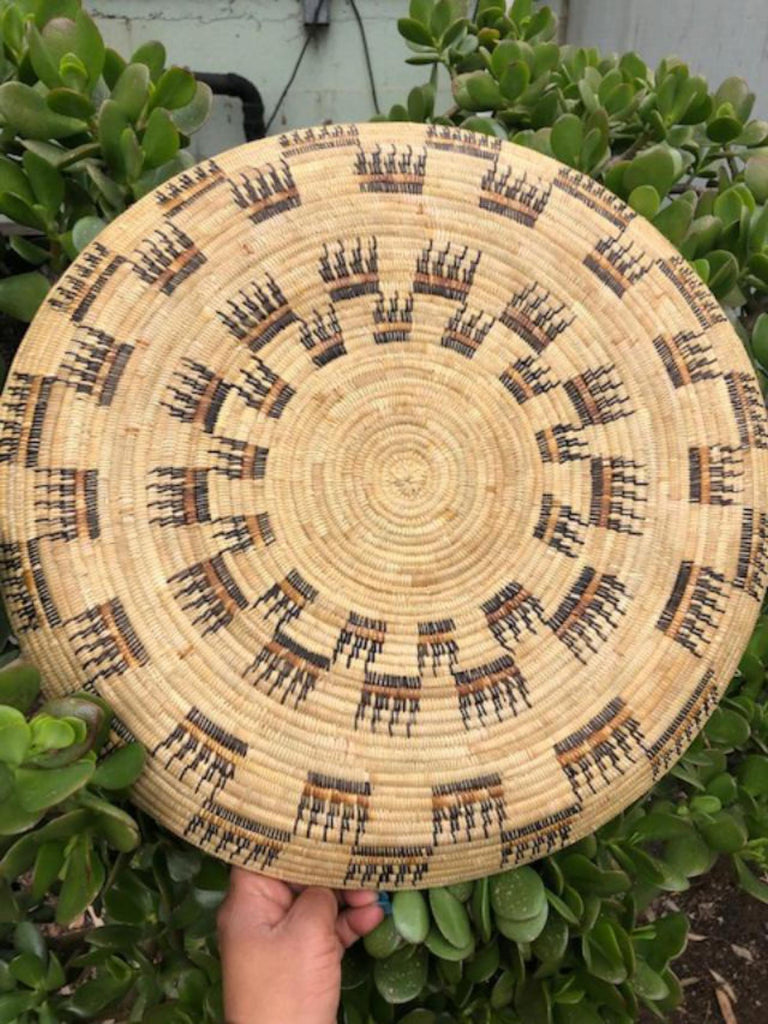
Extraordinary Basket by Kumeyaay Weaver, Paola Vega, # C 1418 Sold
$ 4,800.00
Extraordinary Basket by Kumeyaay Weaver, Paola Vega, # C 1418
Description: # C 1418 Extraordinary Basket by Kumeyaay Weaver, Paola Vega. Made with Juncus grass.
Dimensions: 3" x 17"
Condition: Excellent
Paola Vega is from the San Jose De La Zorra Indian Reservation in Baja California. The San Jose de la Zorra Kumeyaay Indigenous Community is one of five Kámia Kumiai Kumeyaay Indian communities in Baja California, Mexico, including La Huerta, San Antonio Necua, Santa Catarina, Juntas de Neji. An additional 13 Kumeyaay bands remain above the border in San Diego County for a total of 17 recognized Kumeyaay tribes. Following are some comments from Kumeyaay.info on the community. Paola has been weaving for some 20 years.
By the United State's living standards, the Kumeyaay people in Jose de la Zorra are poverty stricken, closed out of most modern-world conveniences, but it is hard to not appreciate the hard work and spirit of the southern Kumeyaay aboriginal peoples and their simple lifestyles.
The road from the main highway into San Jose de la Zorra is unpaved dirt, rocky and eroded, it winds through miles of what at times seems like mountainous high desert wilderness — a beautiful unforgiving countryside. The Kumeyaay People here maintain their own roads.
• San Jose de la Zorra is located approximately 40 miles southeast of Tijuana in a small valley surrounded by mountainous hills at an elevation of 1,200 feet above sea level.
• Approximately 35 Indian families currently live in the valley.
• Their ancestors settled in this mountain valley permanently over 130 years ago, some after being forced south, threatened at gun point, to stay across the U.S.-Mexico border in their southern ancestral lands. The ensuing "border situation" has effectively alienated the (now) southern Kumeyaay from their (now) northern Kumeyaay relatives to the point where many of the families no longer know each other.
Some tribal leaders and private individuals are working some to de alienate these tribal relationships, but the governments' paperwork to cross the border remains an effective obstacle to most southern aboriginal Indian people wanting to cross the Mexico-U.S. border.
• The Mexico Kumeyaay Indian communities have retained much of their traditional knowledge, and appear to have a full generation of Native Kumeyaay speakers. (Source: Kumeyaay.info)
Description: # C 1418 Extraordinary Basket by Kumeyaay Weaver, Paola Vega. Made with Juncus grass.
Dimensions: 3" x 17"
Condition: Excellent
Paola Vega is from the San Jose De La Zorra Indian Reservation in Baja California. The San Jose de la Zorra Kumeyaay Indigenous Community is one of five Kámia Kumiai Kumeyaay Indian communities in Baja California, Mexico, including La Huerta, San Antonio Necua, Santa Catarina, Juntas de Neji. An additional 13 Kumeyaay bands remain above the border in San Diego County for a total of 17 recognized Kumeyaay tribes. Following are some comments from Kumeyaay.info on the community. Paola has been weaving for some 20 years.
By the United State's living standards, the Kumeyaay people in Jose de la Zorra are poverty stricken, closed out of most modern-world conveniences, but it is hard to not appreciate the hard work and spirit of the southern Kumeyaay aboriginal peoples and their simple lifestyles.
The road from the main highway into San Jose de la Zorra is unpaved dirt, rocky and eroded, it winds through miles of what at times seems like mountainous high desert wilderness — a beautiful unforgiving countryside. The Kumeyaay People here maintain their own roads.
• San Jose de la Zorra is located approximately 40 miles southeast of Tijuana in a small valley surrounded by mountainous hills at an elevation of 1,200 feet above sea level.
• Approximately 35 Indian families currently live in the valley.
• Their ancestors settled in this mountain valley permanently over 130 years ago, some after being forced south, threatened at gun point, to stay across the U.S.-Mexico border in their southern ancestral lands. The ensuing "border situation" has effectively alienated the (now) southern Kumeyaay from their (now) northern Kumeyaay relatives to the point where many of the families no longer know each other.
Some tribal leaders and private individuals are working some to de alienate these tribal relationships, but the governments' paperwork to cross the border remains an effective obstacle to most southern aboriginal Indian people wanting to cross the Mexico-U.S. border.
• The Mexico Kumeyaay Indian communities have retained much of their traditional knowledge, and appear to have a full generation of Native Kumeyaay speakers. (Source: Kumeyaay.info)
Related Products
Sold out
Sold out
Sold out




